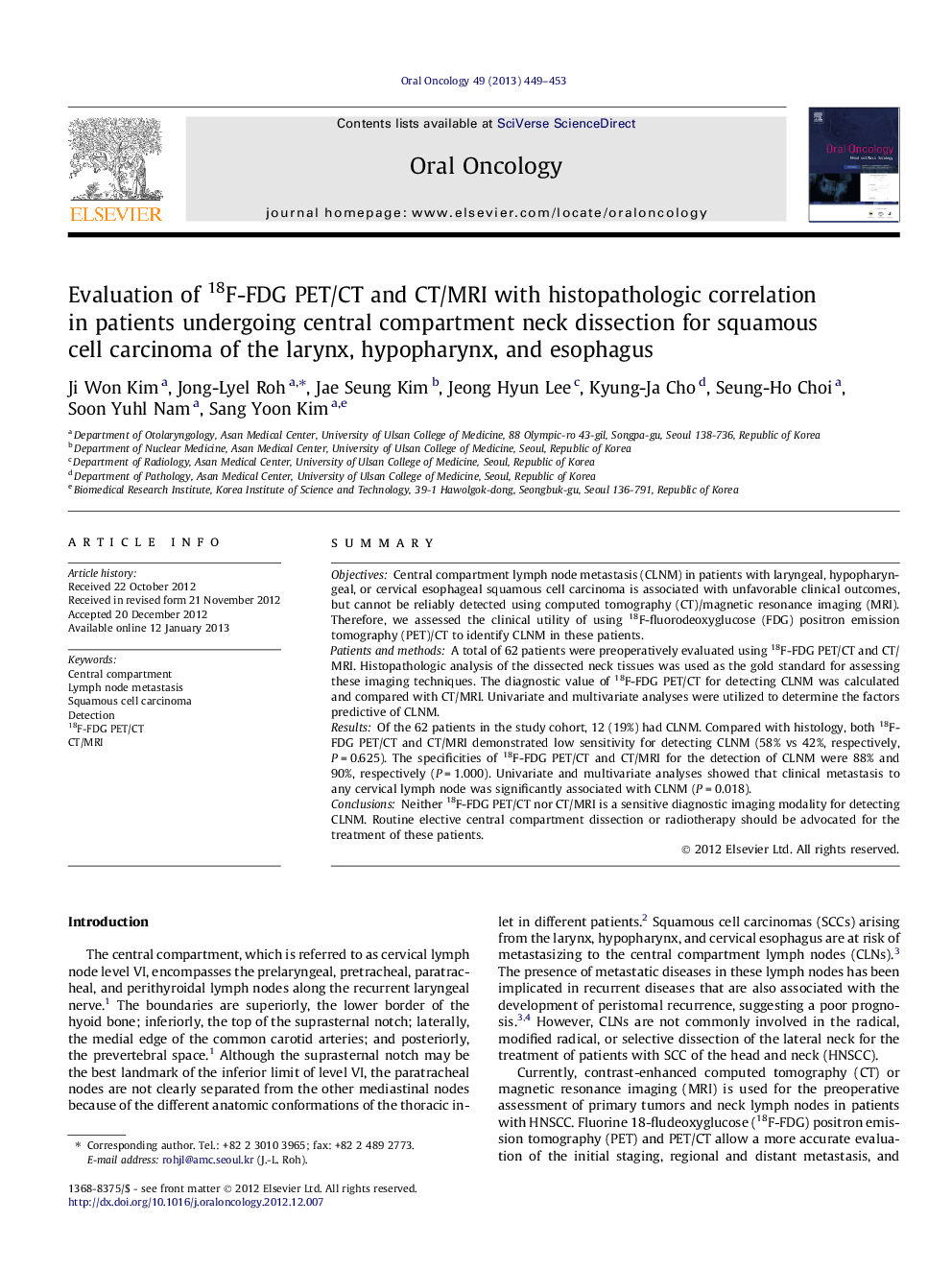| Article ID | Journal | Published Year | Pages | File Type |
|---|---|---|---|---|
| 3164275 | Oral Oncology | 2013 | 5 Pages |
SummaryObjectivesCentral compartment lymph node metastasis (CLNM) in patients with laryngeal, hypopharyngeal, or cervical esophageal squamous cell carcinoma is associated with unfavorable clinical outcomes, but cannot be reliably detected using computed tomography (CT)/magnetic resonance imaging (MRI). Therefore, we assessed the clinical utility of using 18F-fluorodeoxyglucose (FDG) positron emission tomography (PET)/CT to identify CLNM in these patients.Patients and methodsA total of 62 patients were preoperatively evaluated using 18F-FDG PET/CT and CT/MRI. Histopathologic analysis of the dissected neck tissues was used as the gold standard for assessing these imaging techniques. The diagnostic value of 18F-FDG PET/CT for detecting CLNM was calculated and compared with CT/MRI. Univariate and multivariate analyses were utilized to determine the factors predictive of CLNM.ResultsOf the 62 patients in the study cohort, 12 (19%) had CLNM. Compared with histology, both 18F-FDG PET/CT and CT/MRI demonstrated low sensitivity for detecting CLNM (58% vs 42%, respectively, P = 0.625). The specificities of 18F-FDG PET/CT and CT/MRI for the detection of CLNM were 88% and 90%, respectively (P = 1.000). Univariate and multivariate analyses showed that clinical metastasis to any cervical lymph node was significantly associated with CLNM (P = 0.018).ConclusionsNeither 18F-FDG PET/CT nor CT/MRI is a sensitive diagnostic imaging modality for detecting CLNM. Routine elective central compartment dissection or radiotherapy should be advocated for the treatment of these patients.
